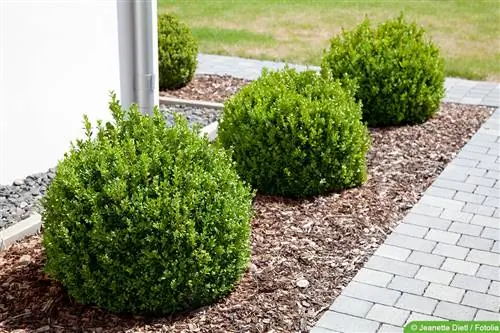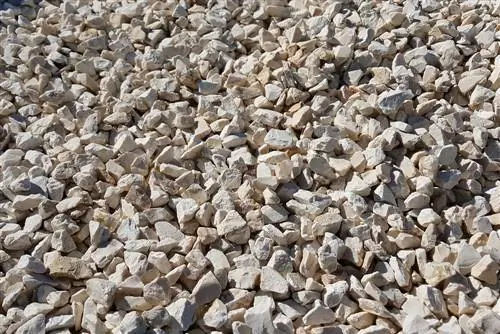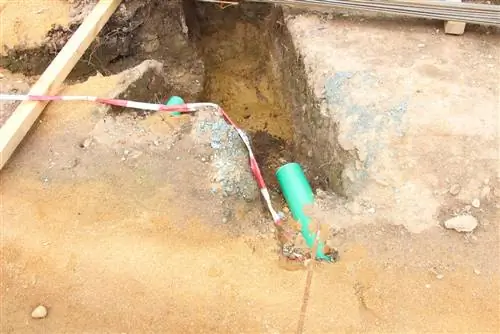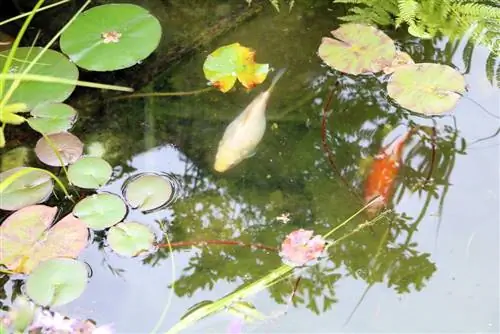- Author admin [email protected].
- Public 2023-12-17 03:39.
- Last modified 2025-01-24 12:45.
It makes sense to install a splash guard to protect the facade and keep it looking new for a longer period of time. However, a few points must be taken into account when planning and implementing.
Depth
In addition to the width of the eaves strip, the depth of the splash guard is particularly important. If the protection is made too shallow, rainwater collects in it and only seeps into the ground very slowly. Until the water has drained away, it sometimes presses intensively against the house wall and thereby puts a strain on it. In addition, shallow ditches fill up very quickly and can overflow, especially during heavy rain. This means that the protection no longer fulfills its function, but puts additional strain on the outer wall of the house due to pressure, accumulating water and slow drainage.

To ensure that this is not the case, the depth of the eaves strip must be at least 80 centimeters. However, if there is a greater water load - for example due to a gradient towards the house - and large amounts of precipitation, the depth can also be set to one meter. On the one hand, this allows more water to be absorbed and, on the other hand, the pressure on the house wall is reduced.
Width
The eaves strip should be at least 20 centimeters wide. The greater the load caused by heavy rainfall or additional water flowing in through a gradient, the wider the ditch around the house should be. Dimensions of 20 to 50 centimeters are usually sufficient to create an effective protection zone.
The following applies again:
The wider the splash guard, the lower the pressure on the house wall.
With a deep and wide eaves strip, the frost protection is higher and the house wall is additionally protected.
Excavate
Due to the depth and because the protection should run around the entire house, it is recommended to rent a mini excavator for the excavation. The following points should also be noted:
- calculate the volume with width, length and depth
- calculate the need for filling material based on the volume
- Use lawn edge stones, palisades or metal frames as support on the outer edge
- insert a frame in front of basement windows to keep the filling material away from the glass
- Pour gravel or other filling material in layers and compact slightly
- as a finish, for example on terraces or protection over basement windows, place metal mesh on the frame
Tip:
A frame made of lawn edging stones or metal plates is not absolutely necessary, except in front of basement windows. However, it serves as a support surface for wire mesh and prevents weeds from spreading in the gravel bed.

filling material
The classic filling material for the splash guard is coarse gravel. Due to the variety of materials and colors, the splash guard filling can be chosen to match the facade and designed decoratively.
The other options include:
- Gabion stones
- Bas alt
- Sand
- gravel
Whether tone on tone or as a color contrast to the house wall - whatever you like is allowed. In this way, the functional strip is not only practical, but also a visual enrichment for the property.






